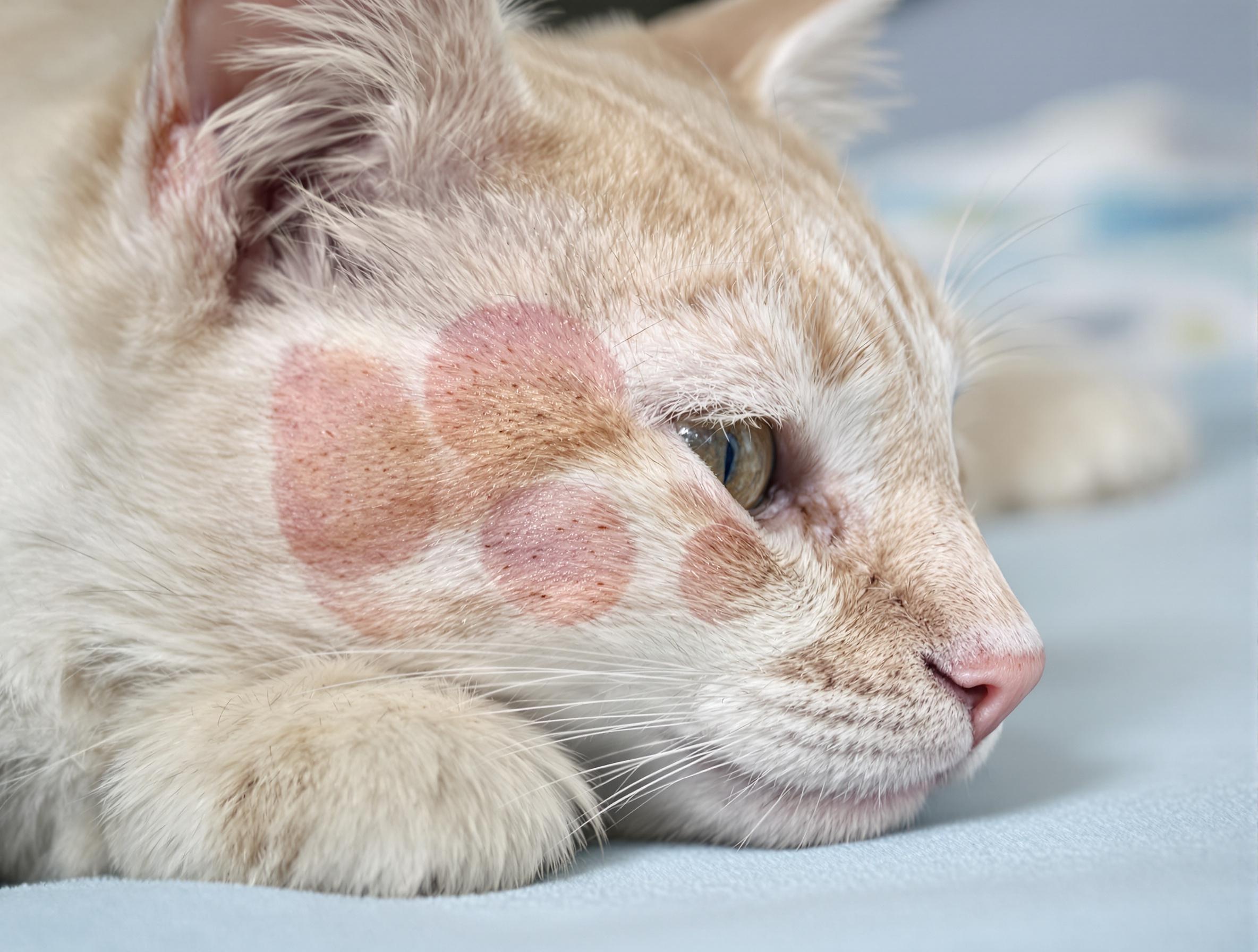Fibrosarcomas (Cancer) in Cats

What are fibrosarcomas?
Fibrosarcomas in dogs and cats are malignant tumors of fibrous connective tissues. Most fibrosarcomas occur on the skin and subcutaneous areas. Other locations include the mouth and at the site of previous feline leukemia and rabies virus vaccinations. In dogs, the most frequent locations are on the trunk and extremities. Oral fibrosarcomas are most commonly seen on the upper and lower jaw. In cats, the development of vaccine-associated sarcomas is believed to occur in approximately one out of 5,000 vaccinated cats. Tumor development may not occur until months or years after vaccination. It is believed that inflammatory response to the adjuvants or preservatives in the leukemia and rabies vaccinations may be involved. Vaccine-associated sarcomas are typically much more aggressive than other types of sarcomas in pets.
Key facts about fibrosarcomas in dogs and cats
- Fibrosarcomas are common malignant cancers of connective tissue in dogs and cats, and may occur on the skin, oral cavity, or at the site of previous vaccination in cats.
- Wide surgical removal remains the treatment of choice, but because of the high likelihood of local recurrence, adjunctive radiation treatment is often needed.
- Prognosis for treating fibrosarcomas with early aggressive surgery is good for preventing distant spread, but guarded for local invasion and recurrence.
Symptoms of dogs and cats with fibrosarcomas
Pets with fibrosarcomas often have a firm swelling of the skin or subcutanaeous region. The skin swelling may or may not be painful, and in aggressive cancers may ulcerate. Pets with oral fibrosarcomas may have increased drooling, bloody oral discharge, foul breath, difficulty swallowing, and oral pain. There may be a history of vaccination with feline leukemia virus or rabies virus.
Diagnosis of fibrosarcoma in pets
While fine needle aspiration can often distinguish fibrosarcomas from other growths, biopsy is necessary in order to stage the cancer and direct future treatment. CBC/chemistry blood tests, as well as X-rays and ultrasounds may be needed to assess your pet’s overall health and if the cancer has spread to other areas. Imaging techniques including CT and MRIs are valuable diagnostic tools in determining how advanced the disease is, and whether underlying bone and other organ structures are involved. In pets with suspected oral fibrosarcomas, aspiration of regional lymph nodes is recommended to assess for the spread of cancer as well.
Treatment of fibrosarcoma in dogs and cats
The treatment of choice for most fibrosarcomas is attempting to surgically remove the mass; however, because of occasional incomplete removal, up to two-thirds of cases may recur. With vaccine-associated fibosarcomas, rates of recurrence may be over 90%. Therefore, it is recommended that initial wide surgical removal of vaccine-associated sarcoma be done by a surgical specialist who can remove as much surrounding tissue as possible. Given the large size and/or infiltration into surrounding tissue, a cure is much less likely in pets with oral fibrosarcomas and vaccine-associated sarcomas with surgery alone. In these cases, adjunctive radiation therapy is often utilized to enhance efficacy of treatment. Radiation therapy may even be used as primary therapy in pets with oral fibrosarcoma, where surgery is not possible. With vaccine-associated disease, radiation therapy should be scheduled within 10-14 days of surgery for maximal benefit and clinical results. Chemotherapy may be helpful in certain forms of skin fibrosarcoma in dogs with drugs such as Dacarbazine, Doxorubricin, Cyclophosphamide, and Carboplatin. For cats with vaccine-associated disease, however, chemotherapy has been much less helpful.
Prognosis of fibrosarcoma in dogs and cats
The prognosis for fibrosarcoma treatment will depend on the location, size, grade, and if vaccinations are involved as causative agents. No matter where the location, without wide surgical resection, fibrosarcomas do have a high likelihood of recurrence. In cases not amenable to complete surgical removal, and in cases that have recurred, prognosis will depend on response to radiation therapy. Oral and vaccine-associated sarcomas tend not to spread to distant areas; however both are very aggressive with local invasion. Combination surgery and radiation therapy offer the best options in these cases.





